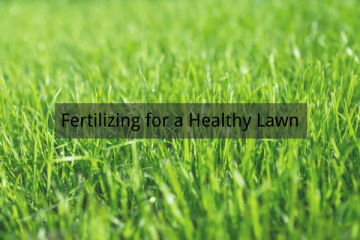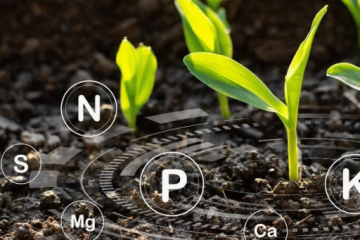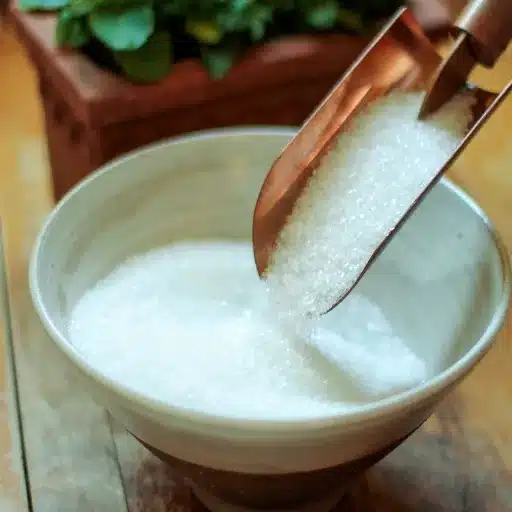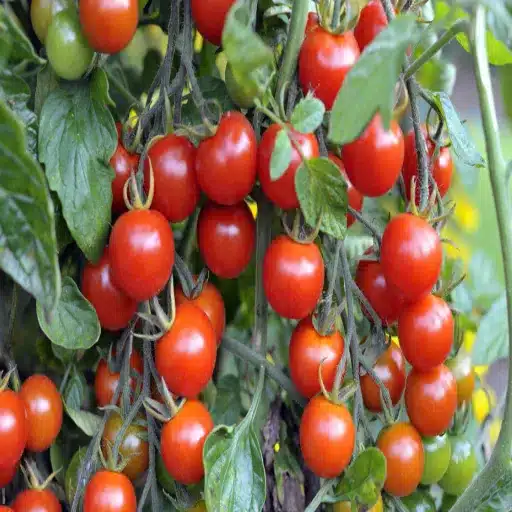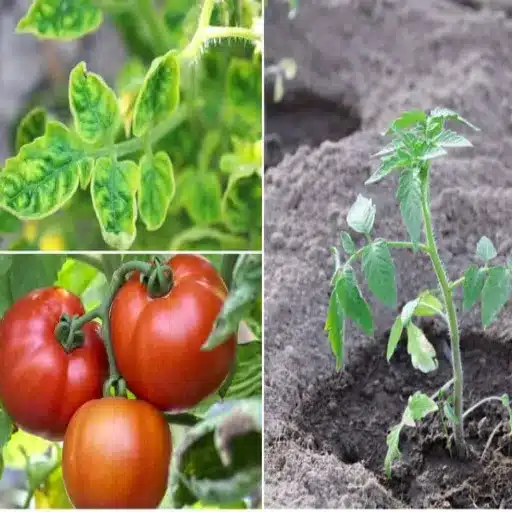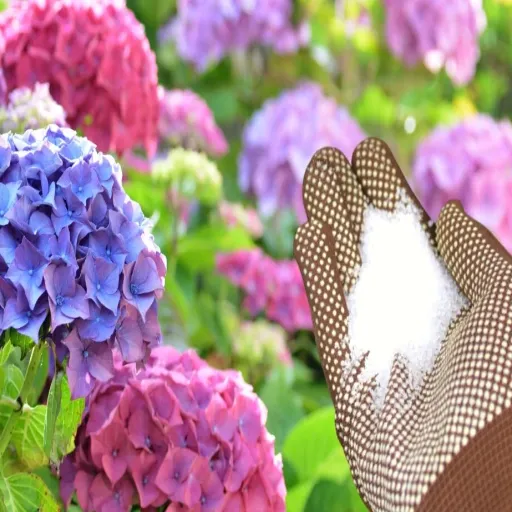For gardeners and plant enthusiasts, finding simple, cost-effective ways to improve plant health and boost growth is always a priority. One often-overlooked yet powerful tool is Epsom salt, a natural compound with the potential to revitalize your garden. But how exactly does Epsom salt work, and what are the science-backed benefits it provides to your plants? This article dives into the practical applications, mechanisms, and advantages of using Epsom salt effectively. Whether you’re looking to enhance nutrient uptake, combat magnesium deficiencies, or encourage vibrant blooms, understanding how Epsom salt interacts with your plants can transform your gardening approach.
How Does Epsom Salt Benefit Your Garden?
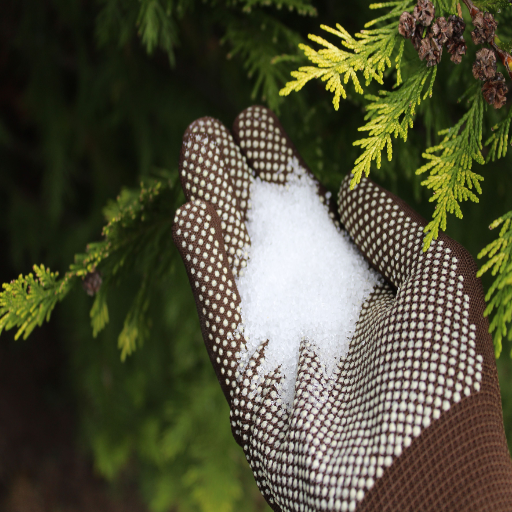
Understanding the Role of Magnesium and Sulfur in Plant Growth
Magnesium and sulfur are two secondary macronutrients that are needed for the proper growth of plants. Magnesium is a part of chlorophyll, which is responsible for photosynthesis. Since it allows plants to harness light and convert it into chemical energy, magnesium affects a plant’s growth and productivity. Further, he actively participates in the turning on of many enzyme systems associated with energy metabolism and the production of carbohydrates, fats, and proteins, which highlights his importance in deep physiological processes.
Sulfur, on the other hand, is very helpful in the formation of amino acids, which are the constituents of plant proteins. It helps to construct some vitamins like biotin and thiamine, and also aids in strengthening the plants. Sulfur also helps in making glucosinolates, which are compounds that provide superiority over pests and diseases in some crops. Together with magnesium, they help the plant do work systematically, using energy to structure and work seamlessly.
When used as Epsom salt, plants get an easily accessible form of nutrients since it contains Magnesium (Mg) and Sulfur (S) in the form of MgSO₄. Epsom salt dissolves quickly in water, allowing it to be taken up by the roots or the leaves. This makes it easy to solve problems of deficiency. Such supplementation is useful in soils that are sandy or lacking in nutrients, as these soils tend to have low amounts of magnesium and sulfur.
Benefits of Magnesium Sulfate for Your Garden Plants
- Magnesium’s Importance in Photosynthesis: Magnesium is vital in photosynthesis because it serves as the central component in chlorophyll molecules. Plants may suffer from chlorosis, where the leaves turn yellow because of insufficient magnesium and reduced chlorophyll levels. Adding magnesium sulfate helps maintain optimal chlorophyll production, which allows greener and healthier foliage in plants and improves energy synthesis.
- Improved Nutrient Utilization: Magnesium sulfate stimulates the uptake of crucial nutrients like nitrogen, which enhances the plant’s uptake of phosphorus. It also catalyzes the plant metabolism’s enzymatic reactions. With MgSO₄ application, there is increased utilization of nutrients, especially in depleted soils, which aids in improving overall plant vigor and development.
- Promotion of Flowering and Fruit Production: Sulfur is important in the formation of amino acids and proteins and magnesium sulfate contains this nutrient. This aids good flowering and fruiting cycles thus contributing to sustaining crops like tomatoes, peppers, and roses that show better bloom and have higher fruit yield when magnesium sulfate supplements are applied.
- Rectifying Soil Nutrient Deficiencies: Magnesium and sulfur deficiencies are common to sandy or acidic soils. Using Epsom salt can help rectify these deficiencies without affecting the soil’s overall pH, which makes it useful for gardeners dealing with various kinds of soils.
- Stress Resistance: Plants treated with magnesium sulfate are more capable of withstanding stress due to some environmental factors like drought or temperature changes. Magnesium helps in controlling the ion balances of the plant, and sulfur is required to form antioxidants, which improve the factors.
Applying magnesium sulphate is useful for gardeners to take care of nutrient deficiency problems while maximizing the efficiency and productivity of their plants.
Can Epsom Salt Help with Magnesium Deficiency?
The most effective approach to counterbalance magnesium deficiency in plants is by using Epsom salt, water-soluble magnesium sulfate, because of its simple application methods. Plants require magnesium as a macronutrient and photosynthetically as well as a core element of chlorophyll. Yellowing of leaves with stunted growth is the presence of chlorosis, which is a sign of magnesium deficiency and can be managed within reasonable limits with salt dosage.
Salt can be supplemented into soils with potassium deficiency or sandy terrain, and soils that are already magnesium deficient. It is best recommended that Epsom salt comes in solution as foliar sprays that can be absorbed by leaves as a direct transfer of magnesium. These methods of supplements offer tremendous, quick uptake of necessary nutrients within days. A dose of 1-2 tablespoons of Epsom salt per gallon of water is adequate, but changing according to species.
Although Epsom salt provides a solution for the problem at hand, assessing soil nutrient profiles needs to be done with utmost precision. Nutrient imbalance related to over-application may also cause some environmental damage through leaching. In order to heal the land plants while causing minimal ecological consequences, thorough soil tests along with precise fertilization strategies are crucial.
How to Use Epsom Salt for Tomato Plants
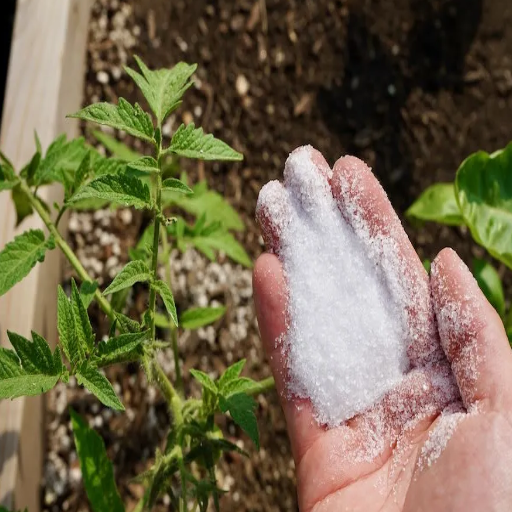
Preventing Blossom End Rot with Epsom Salt
Based on how the tomato plant develops, blossom end rot can be defined as a disorder that is observable in it and exhibits as a deep black shrunk spot present at the blossom end of the plant. The primary reason for this problem is usually the lack of calcium in the tissues of the plant, which can get worse through inconsistent watering or a lack of nutrient absorption. While Epsom salt, or magnesium sulfate, does not serve a purpose in having calcium, its mitigation can still bring some change by working on the logic underlying this complication.
Being one of the components present in Epsom salt, magnesium will strengthen the roots of the plant, making it grow better, which results in better photosynthesis being performed alongside a better root system, enhancing the extraction of vital nutrients such as calcium for the plant. For these reasons, Epsom salt is to be used by dissolving 1-2 tablespoons in water containing a gallon, this solution needs to be sprayed onto the leaves or around the stem of the plant to get soaked thoroughly. This reduces magnesium deficiency without oversaturating. Nonetheless, dealing with the problem itself requires practicing combating it directly alongside irrigation tools and employing Calcium using gypsum or lime.
One must be very careful when using Epsom salt, and regular soil testing remains crucial in confirming magnesium levels to avoid competition with calcium. An integrated approach towards soil management maintains optimal yield potential and biologically active soil, while reducing risks of environmental damage through over-fertilization.
How Much Epsom Salt Per Gallon of Water for Tomatoes?
The standard instructions for adding magnesium sulfate for Epsom salt treatment on tomatoes suggest ranging from one to two tablespoons per gallon of water. This prescription enables the plants to receive enough magnesium sulfate to counter milestonesotential deficiencies without flooding the soil or creating an imbalance in essential nutrients. In the case of foliar sprays, a gentler concentration measurement of around one tablespoon poured into one gallon of water lessens the chances of overheating the Leaves, allowing for easy nutrient absorption.
This procedure needs to be done as close as possible to the symptoms where magnesium deficiency can be seen, such as the yellowing between the veins of the leaves or the underdevelopment of fruits. Soil testing is needed at some point as they make sure that a reasonable balance exists between magnesium and other nutrients like calcium, and will provide data that striping excess Epsom salt will lead to a McGyver-like competition blitz that can maintain a nutrient equilibrium.
Always ensure you apply it before sunrise or after the sun sets, since this increases the chances of better absorption and less evaporation for maximum results. After each application, which can be 2 to 4 weeks, check the condition of the plants to adjust the concentration and frequency of adding Epsom salt.
Using Epsom Salt as a Remedy for Tomato Issues
Commonly known as magnesium sulfate, Epsom salt is often employed for supplementing certain nutrient gaps for tomatoes, especially magnesium and sulfur insufficiencies. During photosynthesis, magnesium significantly impacts the efficiency of a plant’s processes as it is an integral part of chlorophyll. Equally important for healthy plant growth, sulfur is essential for the formation of vital amino acids and proteins. The condition of interveinal chlorosis, where the older leaves turn yellow in the areas between the veins, is referred to as magnesium deficiency. If not treated, this condition can greatly hinder fruit development.
Epsom salt can help correct the imbalance when it is used in the right amount and in the right way. Gardening professionals suggest using one or two tablespoons of Epsom salt in one gallon of water and applying it as a foliar spray or soil drench. Using foliar application techniques measure helps in sending magnesium through the leaves, which quickens visible deficiencies. However, problems can arise from too much use, especially when overapplication alters soil nutrients, which in turn affects growth. Prior soil testing for gaps helps in crafting a tailored solution, which makes corrective measures more precise.
Although Epsom salt can assist with some problems, its application should fit into a larger nutrient management plan. The synergistic application of Epsom salt as a plant growth enhancement strategy along with crop specific fertilization, organic amendments and proper tomato plant watering leads to increased health and well being of the tomato plants.
What is the Right Way to Use Epsom Salt in Your Garden?
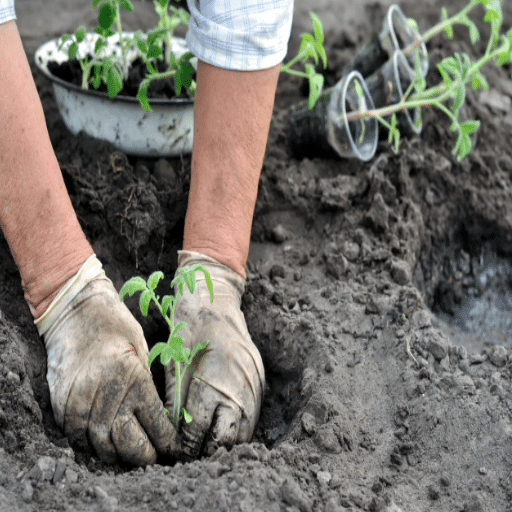
How to Add Epsom Salt to Soil and Water
Like any other plant nutrient, Epsom salt can also be overused. Hence, with a mix of soils and water, we need to measure Epsom salt per use to ensure optimum effectiveness and no wastage. For soil application, it is best to use within the range of 1 to 2 tablespoons of Epsom salt for every square foot of the planting area. This recommendation is best done by spilling the salt through planting holes and thoroughly mixing them to a few inches of soil to ensure best incorporation.
To prepare a water application, add 1 to 2 tablespoons of Epsom salt per gallon of water. The mixture can then be used either as a foliar spray or for soaking the soil at the plant base. Foliar application is more useful for correcting nutrient deficiencies faster, for plant leaves tend to absorb magnesium sulfate without needing to go through the roots. It also needs to be done later in the morning or in the late afternoon to minimize the chances of scorching leaves.
Remember the nutrients needed by the crops because excessive application of Epsom salt can cause an imbalance which will affect the health of the plant. It is advisable to conduct regular soil testing and analysis of plant health indicators to ensure proper application of Epsom salt and integrate it seamlessly into the overall nutrient management plan.
Using a Sprayer or Hose for Garden Application
Just as with any other salt-based product, overapplication is possible, so careful, even application with a hose or sprayer is recommended. When sprayers are employed, an adjustable nozzle setting is recommended for easier coverage of fertilizers across plants. Most Epsom salt applications recommend one to two tablespoons per gallon of water, ensuring that no area is oversaturated. With this range, the solution remains safe and effective. This concentration works well for both foliar feeding and soil drenching. If spraying foliage, ensure the intended surface is covered completely but not in liquid pools to facilitate better magnesium and sulfur penetration through the leaves.
For hose attachments, models that have mixing tanks are suggested for easy and precise dilution. Especially during the first few uses, ensure that the amount of solution dosed out is kept under control to prevent excess wastage and soil nutrient depletion, and contamination of nearby waterways.
We suggest doing the procedure when the weather is calm and windless to prevent the solution from drifting to unintended areas. Do not spray when it’s extremely hot or during peak hours of sunlight because these conditions evaporate liquid too quickly, which will greatly diminish the effectiveness of the treatment. Following these guidelines helps to minimize environmental impacts while guaranteeing the delivery of vital nutrients.
How Often Should You Add Epsom Salt to Your Vegetable Garden?
How frequently you use Epsom salt in your vegetable garden depends on the requirements of the plants being grown and the concentration of magnesium and sulfur already present in your soil. For most common vegetable crops, a general recommendation would be to put Epsom salt during the growing season every four to six weeks. This interval ensures that the salts supplied maintain plant development and growth. Even though routine applications can be beneficial, it is certainly recommended to conduct a soil test to accurately determine nutrient deficiencies before starting to fertilize.
Epsom salt (magnesium sulfate) can be used in diverse ways according to the needs of the plant. It is common practice to use it as a foliar spray or side dressing for crops like tomatoes, peppers, and squash during the growth period and for the heavy feeding crops once every month. A foliar spray is most effective when the concentration is 1 tablespoon of Epsom salt to 1 gallon of water. In most cases, the leaves can take up certain nutrients directly during the rapid growth phase and periods of nutrient-deficient situation recovery, like greening of leaves or improvement in fruiting. To give the plant nutrients over time, mixing 1 to 2 tablespoons of Epsom salt into the soil around the roots enables the nutrients to be passively absorbed.
Monitoring plants for signs of over-application, such as leaf scorch or discoloration, is important and can guide changes to frequency or dosage. In addition to the soil having excessive magnesium, trouble may arise with blossom-end rot, as other calcium obstructing factors may exist. Furthermore, elements such as sandy soil or high rainfall may warrant more frequent applications due to the leaching of nutrients at the root zone. With goal-oriented observation regarding plant health alongside a clear strategy on Epsom salt use, you can make the most out of your gardening endeavors while keeping a balanced nutrient profile.
Can Epsom Salt Improve Soil pH Levels?

Understanding Soil Test Results and Adjustments with Epsom Salt
Developing an effective strategy for managing your soil’s nutrient profile begins with conducting a basic soil test. Testing the soil reveals important information regarding the pH value, deficiencies, and the available nutrients. The magnesium and sulfur deficiencies, which are diagnosed through the tests can be treated with Epsom salt.
Epsom salt does not change the pH of the soil like lime and sulfur do. However, Epsom salt does add some balance to the pH range and provides the specific nutrients needed to support plant growth. Magnesium deficiencies are often seen in areas with acidic or sandy soil due to high nutrient leaching. Epsom salt acts as an excellent supplement for magnesium; it can restore magnesium levels without drastically changing the pH and does not require lime adjustments.
When using Epsom salt, it’s particularly important to adhere to application instructions to avoid worsening existing discrepancies. It is often recommended that one broadcast no more than 1 to 2 pounds of Epsom salt per 100 square feet of garden space, and for foliar feeding, 1 tablespoon per gallon of water, in order to promote uptake without further oversaturating the soil. In cases where soil tests show significant nutrient deficiency, doing re-tests periodically every 6 to 12 months helps navigate the process and modify strategies as necessary.
Informed application of soil-testing data in conjunction with the functions of amendments like Epsom Salt enables the achievement of an optimally productive environment while encouraging self-sustained plant robustness in gardens.
Is Epsom Salt Good for All Garden Soils?
Epsom salt can’t help all soil types, even though it aids some plants as well as certain soil conditions. It’s most useful as part of a compound called magnesium sulfate in plants like tomatoes and peppers that require additional magnesium, or when soils with a deficiency of magnesium. However, in already existing garden soils that have an ample amount of magnesium, the salt can bring about negative consequences due to nutrient imbalances caused by overusing the salt, which impedes the soil’s ability to absorb other vital nutrients such as potassium and calcium, which are critical components for healthy plant growth.
In deciding whether analyzing the garden soil’s composition will be of any good use when trying to figure out whether or not Epsom salt is suitable for the garden is essential to take soil testing as the first step. For instance, some studies suggest that sandy soils are subject to shortages of magnesium and could use assistance, while clay-rich soils are said to retain high amounts of magnesium and wouldn’t need any help.
Also, depending on Epsom salt too much without knowing can result in a saline build-up in the soil, especially in overused cases. An extended buildup of salts can decrease the fertility of the soil and soil as well as lower the health levels of plants. To achieve the best results, Epsom salt should be used alongside other methods of soil caring and monitoring so that it can track nutrients, the plants, and improve its eco-friendly methods.
How to Use Epsom Salt for Peppers and Tomatoes

Why Peppers and Tomatoes Like Epsom Salt
Both crops, peppers and tomatoes, show a particular need for cell and magnesium sulphur during their growth and development. Magnesium helps during photosynthesis since it is the core element of chlorophyll and thus impacts the capacity of the plant to generate energy through sunlight on a very basic level. Without the necessary magnesium, these plants cannot function well. Sulphur helps in the formation of proteins, enzymes, USPs, and vitamins in cells and a plant, and thus decreases the chances of getting damaged by outside forces.
The symptoms and signs of a lack of magnesium are most frequently seen on sandy soils, which have low pH, or long logged places of intensive farming. Interveinal chlorosis and watermelon mosaic virus are some of the well-known symptoms of magnesium deficiency and application issues in capsicum and tomato crops. A good remedy is said to be sodium sulfate, as it can give these nutrients easily and quickly, also aids epsom salt, as it dissolves quickly and gets soaked by these crops.
Regardless, it should be noted that low magnesium soils can be problematic for growing peppers and tomatoes, even with the addition of Epsom Salt. Not all constitutive nutrients are needed, and overuse may lead to nutrient imbalance problems. For example, excess magnesium can inhibit the uptake of other critically important nutrients like calcium and potassium. This can increase the risk of other issues, such as blossom end rot in tomatoes. Precise and accurate soil and plant tissue testing, with routine monitoring, supports the best outcomes.
Getting the Right Epsom Salt Per Gallon Ratio
Getting the Epsom Salt to water ratio right is directly proportional to the result that has to be obtained, while making sure plants do not get any nutrient imbalances. For general use, the recommended use is normally 1-2 tablespoons of Epsom Salt to a gallon of water. This ratio is said to balance over-fertilization while providing enough magnesium sulfate to plants. In targeted measures like foliar sprays, it is better to concentrate on the 1-tablespoon mark to allow for absorption through leaves without harming the rest of the tissue.
It has been established that the effectiveness of Epsom Salt greatly depends on soil conditions and the types of plants used. Conducting soil tests ensures that the available magnesium levels are optimal for the crop rotation that has to be done. Tomatoes and peppers, for instance, which are heavy feeders of magnesium, tend to require regular applications of salts from the recommended range when they are flowering or fruiting. Overapplication can cause disruptions to the soil pH and problems with Calcium absorption, which leads to disorders like blossom end rot.
Mixing techniques rooted in science with periodic soil monitoring allows for precise adjustments in Epsom Salt applications, optimizing phyisiologic plant health and productivity while maintaining critical nutrient balance.
References
Frequently Asked Questions (FAQs)
Q: What are the benefits of using epsom salt for plants?
A: Epsom salt, also known as magnesium sulfate, provides essential nutrients like magnesium and sulfur that improve seed germination, enhance nutrient absorption, and promote the growth of potted plants and perennials. It is particularly beneficial in preventing yellowing leaves and enhancing the vigor of pepper plants.
Q: How often should I apply epsom salt to my garden?
A: For optimal results, it is recommended to apply epsom salt every two to four weeks. This helps ensure that plants receive a steady supply of magnesium and sulfur, which are crucial for their health and growth.
Q: Can I use epsom salt for plants in pots?
A: Yes, gardening with epsom salt is effective for potted plants. It helps improve nutrient uptake and can be particularly beneficial if your soil is deficient in magnesium or sulfur.
Q: How do I know if my soil is deficient in magnesium or sulfur?
A: Signs that plants need more magnesium or sulfur include yellowing leaves, slow growth, and poor seed germination. A soil test can provide a more accurate assessment of nutrient deficiencies.
Q: How can epsom salt prevent blossom end rot in tomatoes?
A: While epsom salt can help improve overall plant health, blossom end rot in tomatoes is primarily caused by calcium deficiency, not magnesium. However, ensuring your soil has balanced nutrients, including magnesium, can support overall plant resilience.
Q: Is it safe to use epsom salt on pepper plants every two weeks?
A: Yes, applying epsom salt every two weeks can be beneficial for pepper plants, as it provides essential nutrients that aid in their growth and fruit production.
Q: Can I use a hose to apply epsom salt to my garden?
A: Yes, you can dissolve epsom salt in water and use a hose-end sprayer to distribute the solution evenly across your garden. This method ensures that the epsom salt is water soluble and easily absorbed by the plants.
Q: Why should I avoid using table salt in my garden?
A: Table salt can harm plants by causing dehydration and nutrient imbalance. Unlike epsom salt for plants, table salt does not provide any beneficial nutrients and can damage plant roots.
Q: Can epsom salt be used for evergreen plants?
A: Epsom salt can be used for evergreen plants to provide magnesium, which helps maintain their green color and overall health, especially if the soil is deficient in this nutrient.
Q: Should I mix epsom salt with compost?
A: While you can sprinkle epsom salt directly on the soil or dissolve it in water, mixing it with compost can enhance its effectiveness by helping distribute the nutrients more evenly. However, avoid overuse as too much magnesium can be detrimental.

